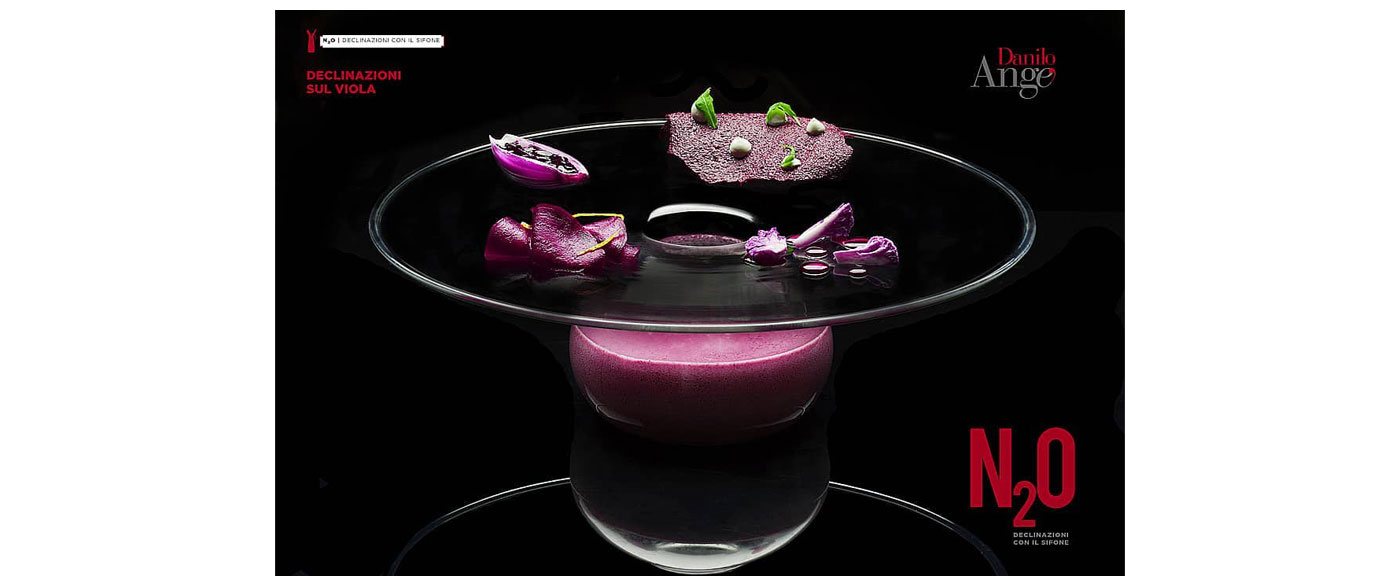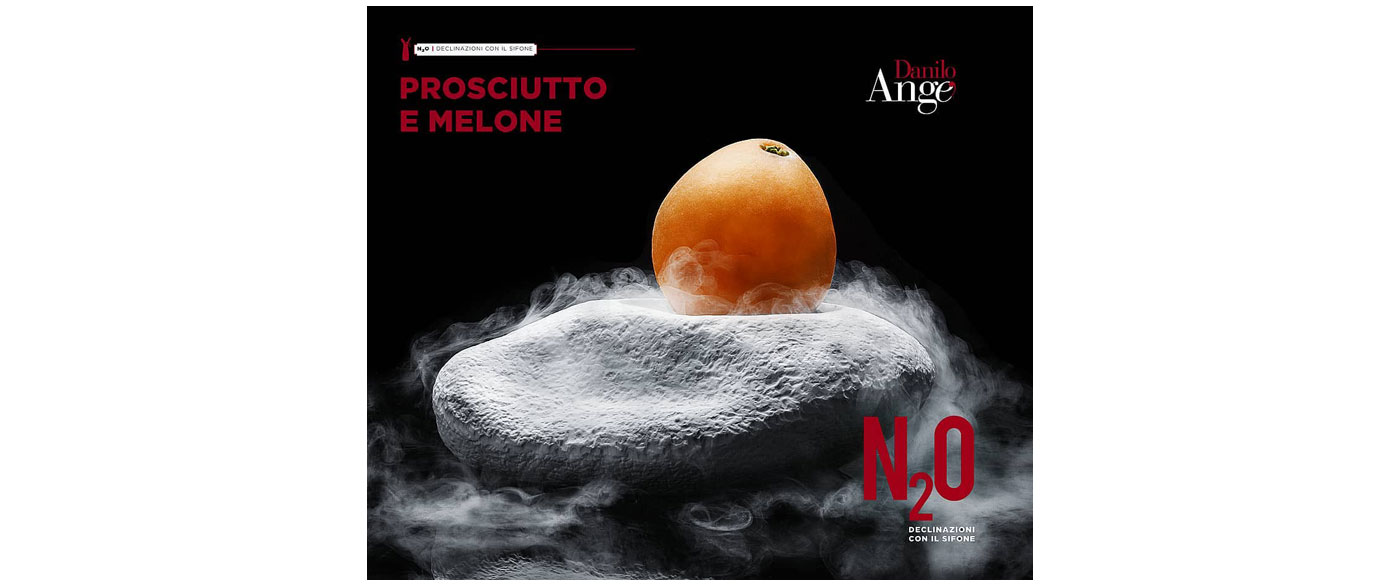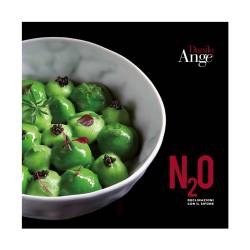The siphon according to Danilo Angè
On Tuesday, December 10 at 11 a.m. at the Carlo Porta Hotelier Institute in Milan, the presentation of chef Danilo Angè's second book, N2O - Declinazioni con il siphone, was held.
In addition to many well-known faces in food and wine journalism, chef Sergio Mei also attended the meeting.
Special guests at the presentation of N2O.
Two faculty members from the institute opened the presentation, and then left the floor to Roberto Stringa, a journalist from Il Corriere della Sera, who introduced the guests and coordinated questions.
The first to be asked was Emanuele Castiglioni, owner with his family of the Trabo company, distributor for Italy of the iSi brand, the best known in the world for the production of siphons, used by Danilo in the creation of all the recipes in the book.
Emanuele emphasized how the idea for the book developed from the need to create an inspirational manual for those who want to learn more about these magnificent tools, which are still little known despite their remarkable development over the years.
Thus, the purpose of the volume is mainly one: to instruct in the use of siphons.
Emanuele does not fail to thank Danilo for dedicating a recipe in the book to a memorable evening spent in Albacete, a town that is home to the Arcos company, another brand that Danilo has been dealing with for years to make his creations.
Stringa then took the floor again, briefly introducing siphons and summarizing their history in a few simple words. While at first they were only used to make cream and seltzer, the 1990s saw a real breakthrough with Ferran Adrià's revolutionary cooking.
Stringa clarifies that the book combines the innovative uses with what was their original use, in a journey from cooking to drinks and coffee. The question for Alberto Schieppati, editor of BarTù and guest speaker at the presentation, is: is all this current?
The answer is clear and precise: 'I don't know if it is current, but it is certainly contemporary.'
The parallelism between bartender and chef, he explains, translates into creating something that unites both and is not limited to being just mixology or just cuisine. The mix of the two is undoubtedly the novelty, the realization that there are new possibilities.
Danilo has therefore been able to seize this possibility, with courage and 'positive audacity,' always with one imperative: knowledge of the raw material.
Stringa then leaves the floor to Cristina Viggè, writer and journalist for Fuori Magazine.
Viggè is curious to know from Danilo how he managed the different textures that the siphon offers, which are normally difficult to manage.
Having taken the floor, Danilo takes the opportunity to thank all the contributors to the project. First and foremost, Ioris Premoli for interpreting the dishes with his magnificent photographs; Mirko Bozzato for enhancing the work with his graphics; Mattia Chiesa who played a very active role in the photo shooting phase, a talented young man with whom Danilo has been collaborating for years and who trained right at Carlo Porta; and Rupam Bardon, another valuable collaborator. Special thanks were dedicated to Lorena Vigolo Angè, Danilo's wife, for all the texts; finally, special thanks went to the Castiglioni family, the principal and all the teachers and students of the Carlo Porta Institute.
We then return to the starting point, taking up Viggè's question, which Danilo answers with simplicity and clarity.
The chef wants to clarify that the use of the siphon is mostly associated with making foams but in reality it is much more than that. The textures it allows are incredible.
He then goes on to make a statement that we really appreciated: we should stop talking about tradition or innovation, the challenge between the two and what is better. In fact, one does not exclude the other and he demonstrates this with a very special recipe of his: the 'falsified' reproduction of a mozzarella that has a tomato mousse inside. It is neither more nor less than a tomato and mozzarella dish, a traditional summer classic, to which Danilo has only changed its appearance to create play and surprise.
The siphon is nothing more than a possibility, which is seized by those with passion and knowledge.
Danilo and the rock face of cooking
It is then the turn of Ezio Guaitamacchi, a journalist, writer, musician, and radio and television author, to whom Stringa asks a simple but fundamental question to understand Danilo's close relationship with music, a relationship that has brought Ezio himself and his 'desk neighbor' Alberto Fortis to the interlocutors' stage.
According to Ezio, it is chefs who are the new rock stars of this millennium, and Danilo most of all. To demonstrate, he brings a very peculiar anecdote.
Ezio explains that he thought of a project that would include the writing of a book, a stage show, and a TV program, in which the favorite dishes of 100 rock stars would be explained and reproduced in a modern way-obviously by Danilo.
Unfortunately, the project was not followed up, but the two did make time to transpose it at least once to the theater, a performance in which Danilo took part and in which he 'performed' on stage exactly like a rock star.
The resulting experience was 360° multisensory, a truly exceptional mix of music, cuisine, and theater that we all hope can be revived to have a future.
Ezio closed his speech with a statement: 'I don't live to eat, but I eat to live, so I don't distinguish the dishes, but I distinguish the things he does,' winking at Danilo.
It is then the long-awaited moment of Alberto Fortis, esteemed musician and close friend of Danilo and his wife Lorena, to whom a special dish in the book has been dedicated, a dish inspired by his song 'Il Duomo di notte'. When asked 'How did you experience this tribute?', the answer comes without delay: 'It sealed our friendship.'
Alberto is then keen to conclude with a phrase about music that he notes is also applicable to cooking: 'It is the most honest of religions because it makes no threats or promises.'
Taking an example from Danilo
Danilo then also asks Ioris Premoli, the book's photographer, to speak. For Ioris, this second volume concludes the journey made together by the two, which began with their first book 'Atmosphere Zero,' dedicated to low-temperature cooking. A 'deliberately perfect' book, as the photographer declares, who played perhaps the most important role after the chef, not only immortalizing but also 'interpreting' the dishes with mastery.
At the end of the speeches, there is time for questions. The first comes from Clara Mennella, editor of Cook Magazine, who is interested to know who inspired Danilo to learn more about siphons.
In addition to his keen interest and curiosity about the subject, surely it was his meeting with Trabo's Castiglioni family that facilitated this evolution, the chef admits.
In fact, every year Danilo visits the Austrian iSi headquarters and, thanks to the comparison with other international chefs, he has the opportunity to exchange ideas that prove useful and inspiring, like any healthy confrontation.
Danilo then adds that he introduced some drinks and realizations with coffee in the book, even though he is not a true beverage professional. His point of view was that of a chef approaching this new subject. In particular, coffee was instrumental in introducing iSi's new Nitro siphon in the book, which works with nitrogen cylinders and not nitrous oxide cylinders like the classic model.
The question that closes the talk is: 'How many siphons do you have at home? ' and Danilo escapes a smile answering, 'I don't know exactly either but I think 15 more or less. But then again, a siphon is forever'.
And if he says so then it is just the case to run out and buy one and learn from his recipes, to try to approach the magical world of siphons.



